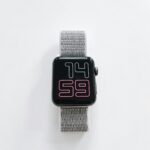Connecting your Windows 10 laptop to your car’s onboard diagnostics (OBD) system has never been easier. Car Scanner Elm Obd2 For Windows 10 is a free software that transforms your computer into a powerful diagnostic tool. Leveraging a Bluetooth or Wi-Fi OBD2 ELM327 adapter, this software allows you to monitor your car’s performance in real-time, access sensor data, and diagnose fault codes.
Understanding Car Scanner ELM OBD2 for Windows 10
Car Scanner ELM OBD2 provides a comprehensive suite of features comparable to professional diagnostic tools. It allows you to:
- Monitor Real-Time Data: Observe crucial vehicle parameters like speed, RPM, coolant temperature, and fuel consumption in real time. This feature provides valuable insights into your car’s current operating status.
- Retrieve OBD Fault Codes: Quickly identify and interpret diagnostic trouble codes (DTCs), commonly known as “check engine” lights. Understanding these codes can help pinpoint the root cause of vehicle problems.
- Analyze Sensor Data: Access detailed data from various sensors throughout your vehicle, providing a deep understanding of engine performance and potential issues. This data can help you proactively address maintenance needs.
- Customize Your Dashboard: Tailor the interface to display the information most important to you. Choose from a wide range of gauges, charts, and data displays to create a personalized diagnostic experience.
- Access Extended PIDs: Unlock hidden data not typically displayed by the car manufacturer, providing a more in-depth analysis of your vehicle’s systems.
- Perform Mode 06 Tests: Access ECU self-monitoring test results, aiding in in-depth diagnostics and troubleshooting.
Compatibility and Requirements
Car Scanner ELM OBD2 is compatible with most vehicles manufactured after 2000 that adhere to the OBD2 standard. Some vehicles as old as 1996 may also be compatible. Specific functionalities may vary depending on the vehicle’s make and model. The software boasts enhanced features for select car brands, including Opel/Vauxhall/Chevrolet, Hyundai/Kia, Renault, Nissan, Infinity, Mitsubishi, Toyota, VAZ, and UAZ.
To utilize this software, you’ll need:
- Windows 10 Laptop or PC: The software is designed specifically for the Windows 10 operating system.
- OBD2 ELM327 Adapter: A Bluetooth or Wi-Fi enabled OBD2 adapter is crucial for connecting your computer to your vehicle’s diagnostic port. It’s recommended to use ELM327 versions 1.4-1.5 to avoid potential compatibility issues. Avoid using cheap ELM327 v. 2.1 adapters as they are known to cause connectivity problems and potentially impact engine stability.
Getting Started with Car Scanner ELM OBD2
- Download and Install: Download the Car Scanner ELM OBD2 software from the Windows Store using an active Microsoft account.
- Connect the Adapter: Plug the OBD2 ELM327 adapter into your vehicle’s diagnostic port, usually located under the dashboard.
- Pair via Bluetooth or Wi-Fi: Establish a connection between your Windows 10 device and the adapter using Bluetooth or Wi-Fi, following the adapter’s instructions.
- Launch the Software: Open the Car Scanner ELM OBD2 software on your computer.
- Start Diagnosing: Begin monitoring your car’s performance, read and clear fault codes, and delve into sensor data.
Conclusion
Car Scanner ELM OBD2 for Windows 10 empowers car owners with a free and powerful tool for understanding and maintaining their vehicles. By leveraging the power of your Windows 10 device and an OBD2 adapter, you can gain valuable insights into your car’s health, diagnose problems, and potentially save on repair costs. While a beta version, the software provides a comprehensive range of features that make it a valuable asset for any car enthusiast. Remember to use a compatible ELM327 adapter for optimal performance and avoid potential issues.


